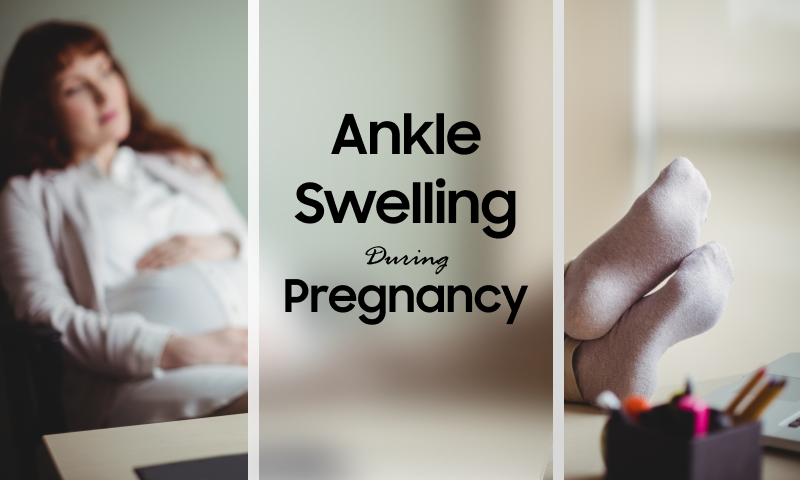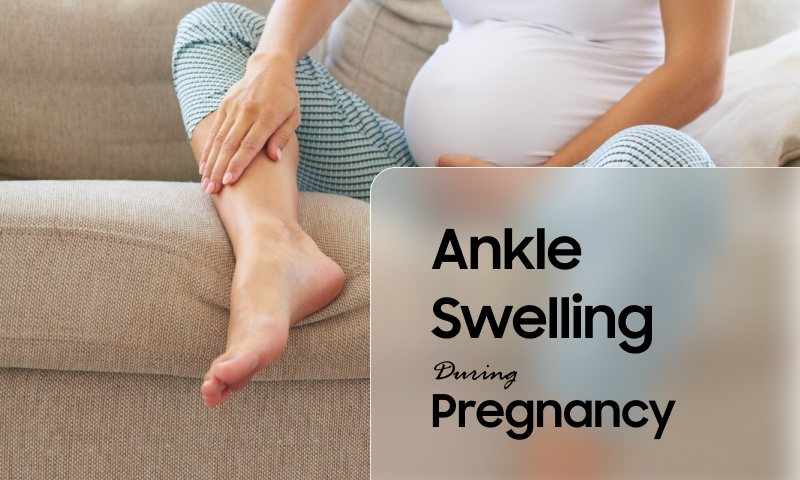Introduction
Ankle swelling, often known as edema, is one of the numerous physical changes that pregnant women frequently experience. We learn about the ankle swelling during pregnancy in this post, discussing its causes, and preventive measures.
Understanding the Causes of Ankle Swelling During Pregnancy
The build-up of extra fluid in tissues, especially in lower body parts like ankles, feet, and legs, causes ankle swelling. Let’s find out what causes ankle swelling during pregnancy
1. Hormonal Influence:
A woman’s body experiences notable hormonal changes during pregnancy, such as elevated levels of progesterone and estrogen. These hormones are necessary for controlling fluid balance because they frequently cause swelling and fluid retention, particularly in the limbs.
2. Increased Blood Volume:
The body changes drastically to support the growth of the placenta and fetus. The growth of blood volume, which can rise by as much as 50% during pregnancy, is one such adjustment. The increased volume of blood may put pressure on the blood vessels. Hence, preventing normal blood flow and increasing the risk of fluid leakage into the surrounding tissues.
3. Uterine Pressure:
The vena cava and pelvic veins, and other pelvic blood vessels, get compressed as uterus grows to support growing fetus. This pressure causes the lower body’s veins that return blood to get blocked. That causes fluid to build up and expand in legs and ankles.
4. Gravity and Posture:
Long-term standing or sitting can worsen accumulation of fluid in lower part of body because of force of gravity. Long-term inactivity and insufficient movement can worsen edema and compromise circulation.
5. Sodium and Fluid Retention:
During pregnancy, body experiences changes in its sodium and fluid balance. That frequently leads to increased sodium retention and fluid buildup in the tissues. Hormonal changes in combination with an excessive salt diet might worsen edema in pregnant women.

Management and Treatment Options for Ankle Swelling During Pregnancy
Although ankle swelling in pregnancy appears common and typically harmless symptom. It is important to manage discomfort and reduce swelling in order to protect health of the mother. The following are some remedies for ankle swelling during pregnancy:
- Elevation:
Elevating legs above level of heart can help in return of venous blood and reduce edema. By encouraging removal of extra fluid from lower part of body. Its’ advised that pregnant women raise their legs many times a day, particularly following extended periods of sitting/standing.
- Regular Exercise:
Walking, swimming, and yoga during pregnancy are low-impact exercises that can improve circulation, reduce swelling, and avoid fluid retention. During pregnancy, exercise also supports general physical and mental health.
- Compression therapy:
By applying light pressure to the legs, compression stockings or socks promote venous return and reduce fluid retention. With Graduated compression garments, edema gets reduced. And blood flow encourages by applying highest compression at the ankles and gradually lowering pressure toward the thighs.
- Hydration and Nutrition:
Retaining proper fluid balance and avoiding dehydration—which can worsen swelling—require drinking enough water. To reduce fluid retention, pregnant women should eat balanced diet full of fruits, vegetables, lean proteins, and whole grains. They should also try to restrict their sodium intake.
- Rest and Relaxation:
During pregnancy, stress management, circulation promotion, and edema reduction depend on giving priority to rest and relaxation. Including rest intervals and raising the legs at various points during the day helps reduce pain and improve comfort levels.
- Massage Therapy:
It is possible to decrease fluid retention, promote lymphatic circulation, and reduce swelling in the ankles and feet. By using gentle massage techniques like lymphatic drainage massage. Expectant mothers should seek the help of a professional prenatal massage therapist who is skilled in secure and effective methods.
Prevention Strategies for Ankle Swelling During Pregnancy
Although preventing ankle swelling completely during pregnancy can seem difficult. However, using measures to avoid it can decrease the severity and frequency of the condition. The following are a few preventive techniques on how to reduce ankle swelling during pregnancy:
- Maintain a Healthy Weight:
Aiming for a healthy weight gain throughout pregnancy will reduce fluid retention and relieve excessive stress on the circulatory system. Optimizing mother and child’s well-being throughout pregnancy can happen by following a balanced diet. And getting regular, and appropriate exercises for pregnancy.
- Adjust Body Positioning:
You can minimize effects of gravity and encourage return of venous blood by avoiding long periods of sitting or standing. And by taking frequent pauses to raise your legs. Regularly shifting postures and avoiding crossing one’s legs will help to release blood vessel pressure and lower chances of edema.
- Wear Supportive Footwear:
Selecting shoes that are comfortable, fit properly, and have sufficient arch support helps improve circulation, reduce stress on lower limbs. And maximize foot and ankle alignment. Choosing shoes with room for your toes and low heels might ease pain and lessen the chance of swelling.
- Stay Cool and Hydrated:
It is especially important to keep things cool and comfortable during warmer weather to avoid excessive sweating and fluid loss. That can worsen fluid retention. Maintaining proper hydration levels, controlling body temperature, and eliminating toxins improves by consuming sufficient amount of water throughout the day.
- Incorporate Dietary Modifications:
To assist with maintaining fluid balance and reduce fluid retention. Prioritize foods high in potassium, magnesium, and vitamin E, such as avocados, almonds, and leafy greens. Reducing sodium retention and edema can get achieved by limiting processed foods, excessive salt consumption, and carbonated drinks.
Conclusion
Ankle swelling during pregnancy is a common symptom that many pregnant women go through. Pregnant women can minimize discomfort, lessen swelling, and enhance general well-being throughout and after pregnancy by understanding the underlying causes, putting good management techniques into practice, and taking preventive action.
Also Read – Managing Leg Cramps during Pregnancy
Frequently asked questions
Q1: When do you start to get swelling in pregnancy?
Ans: Edema, or swelling in the hands, feet, and ankles, mostly appears in pregnant women between weeks 20 and the third trimester. But it can also appear at any stage in the pregnancy.
Q2: What causes swollen ankles in pregnancy?
Ans: Swelling of ankles and feet can occur during pregnancy because of the body’s excess fluid and developing uterus’s pressure. When a woman’s delivery date approaches, the swelling usually gets greater. Especially toward the end of the day and in warmer weather.
